How to install vinyl flooring planks? It’s the most asking question by those who want to decorate their floor with vinyl flooring planks. So, you purchased your vinyl plank flooring and are thinking of installing it yourself? Don’t worry. They are super easy to install.
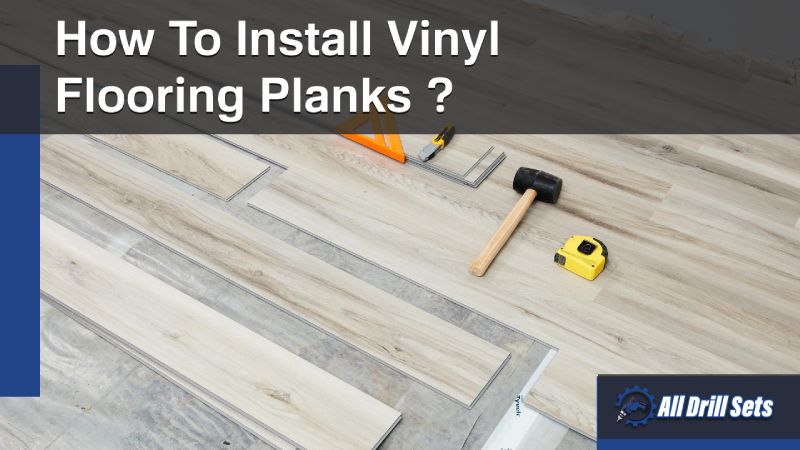
In contrast, you could have bought engineered wood, solid hardwood, porcelain tile, or ceramic. But you have chosen vinyl flooring because you had the confidence that you could do it all by yourself and very inexpensively. Yes, you can do that. In this article, we will provide a step-by-step guide to install vinyl flooring planks.
What Is Vinyl Plank Flooring?
Vinyl plank flooring is the most simple one to install. It is straightforward to cut, needs no bonding to the subfloor, and snaps together end-to-end and edge-to-edge. Vinyl plank flooring is also suitable for high-moisture areas such as basements and bathrooms since the material is entirely impervious to water.
What You’ll Need
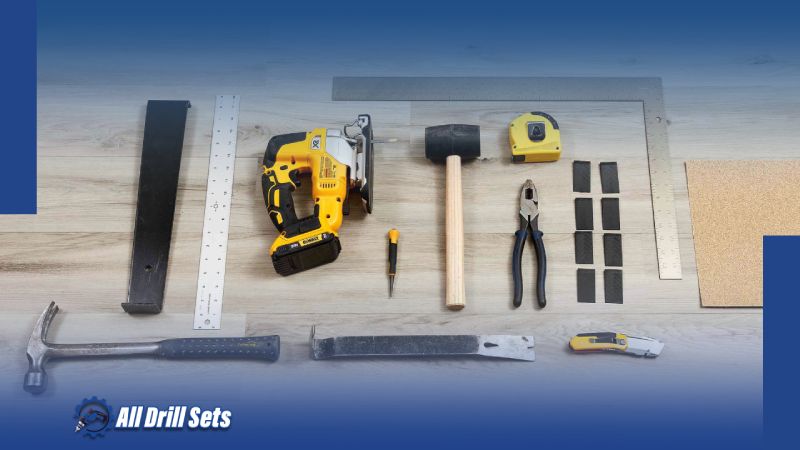
Equipment / Tools
- Flat pry bar
- Sander (if needed)
- Sandpaper (if needed)
- Tape measure
- Pliers
- Fine-tooth saw
- Utility knife
- Straightedge
- Drawbar tool
- Carpenter’s square
- Hammer
- Nail Set
- Pneumatic brad nailer (optional)
Materials
- 1/4-inch spacers
- Vinyl plank flooring
- The Spruce / Kevin Norris
- Vinyl plank flooring installation tools
- Plan the Flooring Layout
- Floor leveling compound (if needed)
- Concrete patcher (if needed)
How To Install Vinyl Flooring Planks
You can easily cover a moderate-sized room with vinyl plank flooring with just a few hours of work. Let’s see the steps we will cover in this article at a glance that will make your task supper easy.
- Plan Flooring Layout
- Remove the Trim
- Prepare the Floor
- Test-Fit the First Row of Planks
- Cut Planks
- Connect the Flooring Planks
- Cut for Protrusions
- Fit Planks Around Protrusions
- Cut and Fit the Final Planks
- Reinstall the Trim Moldings
So let’s discuss the process in detail of each step:
Step 1: Plan Flooring Layout
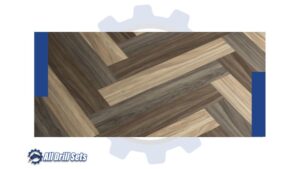
Like wood or laminate flooring, Vinyl plank flooring requires a layout that is pleasing to the eye. Generally, you can do that by working from the most visible wall. That greets the eye as anybody enters the room—then working outward toward the entryway. In a small bathroom, the one that runs alongside the bathtub is the most visible row.
You should lay the first row of planks parallel to this most prominent wall or room feature. And do the rest across the room. Your last row can be slightly uneven because few rooms are truly square. But shoe moldings or baseboards will usually obscure this unevenness.
Plan to stagger rows, preventing end joints from falling at the same point for adjoining rows. Manufacturers suggest that end seams be offset at least six inches from row to row.
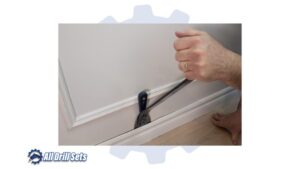
Step 2: Remove the Trim
For straightforward installation, it is always recommended to remove the trim that makes contact with the floor. Ideally, this includes base shoe moldings, baseboards, and case moldings around doors often; if you remove doors from their hinges, that help with installation, too.
Door case molding is comparatively effortless to remove and replace, and removing it helps cleaner installation. If you do not want to remove door trim or have protrusions that are irremovable, you can cut the vinyl flooring and fit around these obstacles.
Trim molding is usually attached with thin brad-like nails, and you can remove it by cautiously prying it off using a flat pry bar. For eliminating the brads from the trim, pull them straight through the molding from the backside; you can use pliers here. If you find the trim is still in good shape after removal, set it aside for re-installation after installing the floor.
Step 3: Prepare the Floor

You can lay Vinyl plank flooring right over existing flooring, but you should sand down to make a flush surface for the new floor if there are any high spots. Your target is to make the smoothest, flattest plane possible.
- If you are laying vinyl plank flooring on top of a concrete subfloor, fill any divots or cracks with a concrete patcher.
- If you are putting the flooring on top of a plywood subfloor, fill any depressions with a floor-leveling compound.

Step 4: Test-Fit the First Row of Planks
Now it’s time to test fit the first row of your vinyl planks down the wall’s length. Visually, the flooring layout should be most pleasing if cut planks are of more or less equal sizes at the opposite sidewalls.
Begin with a full plank at the center, and work to any side, so that cut planks at the ends will be equal. It would help if you left a 1/4-inch gap at the wall and the ends. You can use spacers d against the walls to establish this expansion gap.
Step 5: Cut Planks

Cutting vinyl planks is similar to how you cut drywall panels. First, use a utility knife and carpenter’s square to score partially through the face of the plank. Move the knife lightly across the plank’s face several times rather than trying to cut it in one pass. Remember, Vinyl planks are slippery, and you must be careful when pulling back on the blade.
Then, flip the board over to rest until the finished surface is facing down. Fold the plank back. It can snap off by itself. If not, finish the cut by a knife through the fold.
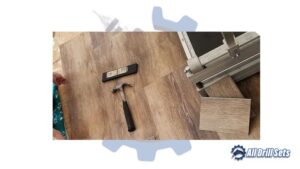
Step 6: Connect the Flooring Planks
Most luxury vinyl planks attach end-to-end and edge-to-edge with a fold-and-lock type of tongue-and-groove system. One plank rests flat on the subfloor, and the other plank is rested at an angle and placed into the receiving groove of the first board.
You can fold the second board until it lies flat and parallel to the first board, and that helps to draw the boards together and lock them in place.
Once you lay the first row, continue across the floor with the following rows, first joining the planks end-to-end, then placing the new row along the edge of the former row and folding the tongue into the groove of the former row.
Ensure that end joints are staggered and are at least 6 inches away from the end joints in the former row.
Step 7: Cut for Protrusions
Where you encounter obstacles like floor ducts or door frames, you can cut vinyl planks with a utility knife or easily snip to the desired shape with tin snips or heavy-duty shop scissors.
Step 8: Fit Planks Around Protrusions
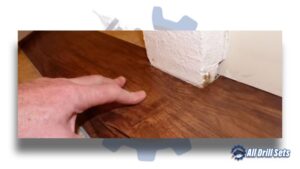
After you are finished with cutouts, first attach the plank to the adjoining plank and hold the cutout plank upward at an angle. Then slowly fold down the cutout plank before it locks into place with the adjoining plank.
Vinyl plank flooring is flexible enough, and it can be bent enough to get fit around door frames and other protrusions. Depending on the obstruction nature, it can be necessary to disassemble former planks to navigate the cutout plank into position.
Step 9: Cut and Fit the Final Planks
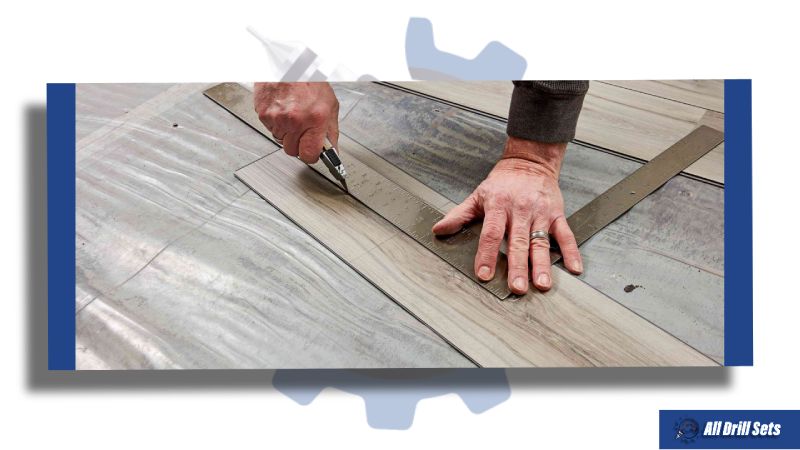
At the distant wall, the last row of planks you might need to trim lengthwise to fit. Ensure you cut it narrow enough to provide a 1/4-inch gap between the wall and the planks and. You can use a utility knife for lengthwise cuts guided by a long straightedge.
As with previous rows, connect these narrow planks end-to-end. Now fold the tongues into the grooves of the last row. If necessary, you can use a drawbar to tug this final narrow plank into place against the previous row.
Step 10: Reinstall the Trim Moldings
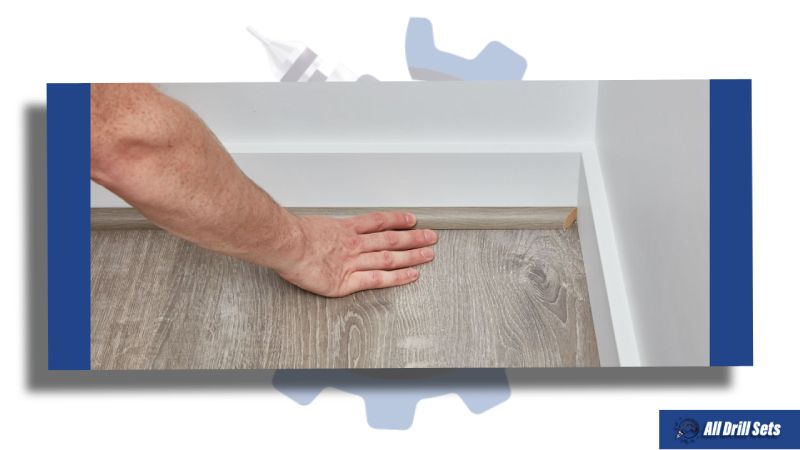
After you lay the floor, re-attach the baseboards and trim. You should use a pneumatic brad nailer because manually nailing with a hammer can easily damage the trim. If you notice the level of the floor has been raised enough, you can trim the ends of door case moldings to adjust the reduced space.
Expert Tips
Bosch GSR12V140FCB22 12V Max Flexiclick 5-In-1 Drill Driver
The Bosch Flexiclick is not entirely a unique idea, but it’s a very cool concept. It’s a drill with interchangeable heads. So when you are drilling holes, it is possible to change the drill head as you need. Besides, if you are working in a tight space, you can detach the head and attach the right angle drill head.
Bosch calls the mounting system “One-Click interface.” Pretty cool! For installing Vinyl flooring, this is a convenient tool.
Makita Power Tools Company
Makita is well known for producing lightweight, highly efficient products. Makita tools are easy to use and are ideal for professionals and beginners. Makita tools like the cordless reciprocal saw, impact wrench are famous among the contractors for their lightweight and user-friendly design.
However, Makita’s is best known for an essential power tool component—the Makita 18V battery. These 18V lithium-ion batteries are famous for durability and consistently outperform batteries from giant companies like DeWalt and Milwaukee.
Best Cordless Impact Drivers

Impact drivers are convenient tools for Vinyl flooring planks. Here is our list of the best cordless impact drivers.
- Dewalt DCF887D2 20V MAX XR Impact Driver
- PORTER-CABLE PCCK647LB 20V MAX Impact Driver Kit
- Makita XDT131 18V LXT Brushless Cordless Impact Driver Kit
- Dewalt DCF887B 20V MAX XR Impact Driver
- Milwaukee M12 Fuel 1/4″ Hex Impact Driver Kit
- BLACK+DECKER BDCI20C 20V MAX Impact Driver Kit
- DEWALT DCF885C1 20V MAX Impact Driver Kit, 1/4-Inch.
BLACK+DECKER 7-1/4-Inch Circular Saw with Laser, 13-Amp
This is a very powerful saw from the famous brand Black and Decker. It has a powerful 13 Amp motor and is suitable for most cutting applications. The built-in laser guide of the corded circular saw ensures an accurate cut. It has a spindle lock which helps for easy blade changes. It comes in a lightweight design and has enhanced control. The straightforward bevel adjustment allows for accurate 0-45-degree angled cuts.
Conclusion
We hope you found your answer to the question “How to Install Vinyl Flooring planks” by now. We told you the process is easy, and after our step-by-step guide, we hope you have successfully installed your Vinyl flooring planks. Our suggested tools will also help you to complete this project efficiently. See you in another article.
